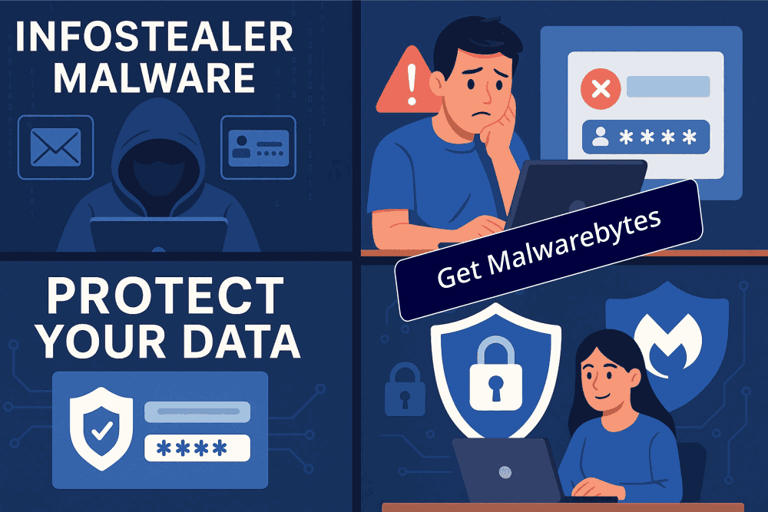InfoStealer Malware Exposes 184 Million Login Credentials
A massive infostealer malware breach has exposed 184 million login credentials, putting millions at risk. Learn how infostealers work, the dangers of phishing emails, and what you can do to protect your accounts from these malicious attacks.
DATA BREACH
6/29/20252 min read
InfoStealer Exposed 184 Million Login Credentials
Imagine logging into your favorite website only to realize someone else has already been there—reading your emails, accessing your bank details, maybe even posing as you. That nightmare has become reality for millions of users in the wake of a massive infostealer Malware breach that exposed a staggering 184 million login credentials across the globe.
What Are Info Stealers?
Infostealers are a class of malware specifically designed to do one thing extremely well—steal. They infiltrate devices quietly, often bundled with fake software downloads, Phishing emails, or malicious ads. Once inside, they comb through saved passwords, browser history, autofill data, emails, messaging apps, even Cryptocurrency wallets—sending it all to Cybercriminals, often without a single noticeable symptom. These digital pickpockets work fast. A typical infostealer can harvest all your sensitive data in just seconds and upload it to a dark web marketplace where stolen credentials are bought and sold like currency.
InfoStealer Malware Threat
The recent breach of data by infostealer malware that exposed 184 million logins is a stark reminder of how sophisticated cybercriminal networks have become. Victims range from casual internet users to employees at major enterprises. For businesses, this isn't just about lost passwords—it’s about compromised systems, damaged reputations, and financial risk. What makes infostealers particularly dangerous is their stealth mode they operate in. Unlike Ransomware, which announces its presence loudly, infostealers do their job quietly and leave no obvious trace. By the time you realize something's wrong, your information may already be in the wrong hands.
Protect Yourself from InfoStealer
The good news is, there are ways to fight back, and it starts with awareness. Here are a few actionable steps to safeguard your data from infostealers:
Use a Trusted Anti-Malware Solution like Malwarebytes, which offers real-time threat detection and proactive removal of infostealers.
Avoid Downloading Pirated or Suspicious Files, especially from pop-up ads or sketchy forums.
Regularly Update Your Software, including browsers, operating systems, and a robust Antivirus_Software.
Use Strong Passwords: Implement unique and complex passwords for each account, including a mix of uppercase letters, numbers, and symbols. If required use a Password_Manager.
Enable Two-Factor Authentication: This adds an additional layer of security, requiring a second form of verification beyond just the password.
Regularly Monitor Accounts: Frequently check account activity for any unauthorized logins or irregularities.
Be Wary of Phishing Attacks: Stay vigilant against suspicious emails and messages that may request sensitive information. Just do not give away your sensitive data to anyone.
Malwarebytes stands out by offering behavior-based threat detection, which doesn’t just look for known malware signatures—it watches for suspicious activity in real time. That means even newly developed infostealers don’t slip through the cracks.
Final Words on InfoStealer Malware
The digital world comes with real risks, but they’re not insurmountable. This massive breach of sensitive data by infostealer malware is a wake-up call, but not a cause for panic. With the right tools and habits, you can outsmart infostealers and keep your identity and data where it belongs, with you. Staying informed and implementing these strategies can significantly reduce the chance of falling victim to data breaches. Organizations also play a critical role; they must invest in security measures and regularly educate users about the importance of safeguarding their information.
As the digital landscape continues to evolve, so too do the tactics employed by cybercriminals like this infostealer malware. The recent exposure of login credentials is a wake-up call that urges both individuals and organizations to prioritize cybersecurity. By fostering a culture of security awareness and vigilance, it is possible to mitigate the risks associated with online threats, protecting both personal information and organizational integrity.
Cyber Security Threats
Malwarebytes Premium
Protect all your devices from all Malware and Viruses
© 2025. All rights reserved.


